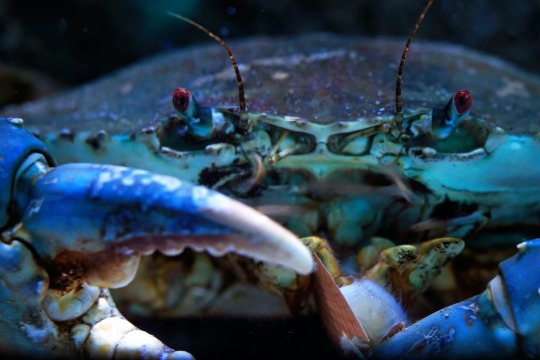#sea crab
Text
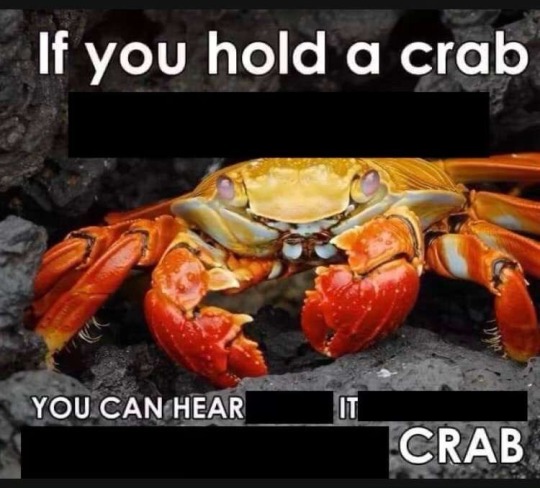
#sally lightfoot crab#crabs#crab#crustaceans#marine biology#aquarium#fish#sharks#oceanposting#deep sea#sea creatures#ocean#science#marine biology memes#fishblr#crab meme#sea life#memes
10K notes
·
View notes
Text
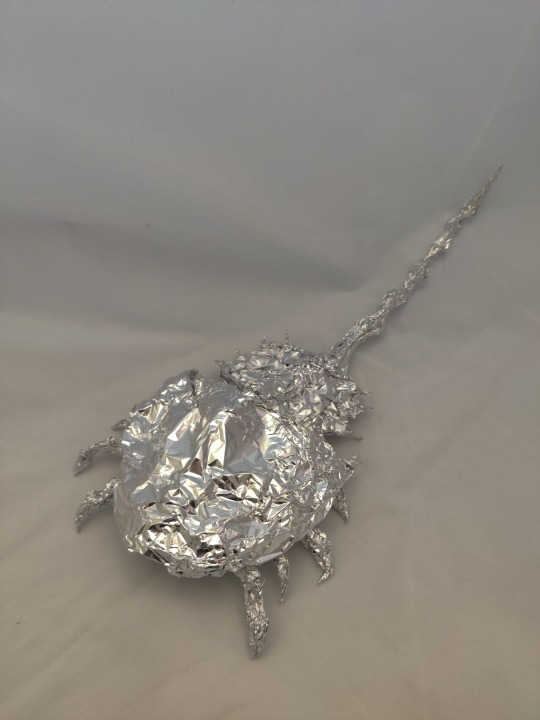
Horseshoe Crab - Aluminum Foil Sculpture
9K notes
·
View notes
Text
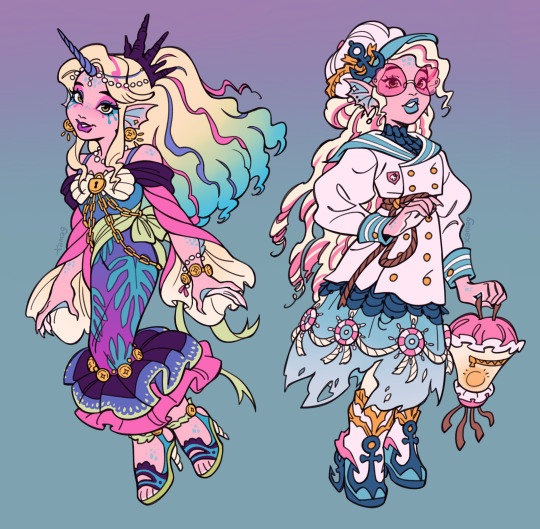

[Monster High] so since pink lagoona is a hot topic in the fandom, i though it'd be a fun challenge to try and make some pink lagoonas myself. there's actually a lot of material to work with imo!
these are all essentially looks for a recolored g1 lagoona, only the last one being intended for her g3 personality. i wanted to make more for g3, but didn't quite like them in execution, so maybe another time..
tropical treasure: beautiful, glamorous, colorful, but a bit more of an aquarium decoration than a strange beast. loosely inspired by bettas
ghost ship cruise: etherial haunty lagoona, inspired by jellyfish. light, translucent and probably cold to the touch
coy classic: elegant mermaid pond lagoona, inspired by koi fish. this one is kind of an amalgamation of her g1 dolls that exists in my head tbh
little axolotl: cute and quirky, like the new lagoona. inspired by axolotls and sea slugs :)
#my art#monster high#i wanted a crab/shrimp and a deep sea lagoona sooo bad#but it's not their time yet#i actually quite like new lagoonas holographic pastel rainbow vibe i just wish they experimented more with the sea creatures
8K notes
·
View notes
Text

Living Fossils - Creatures that remain seemingly unchanged by time. Here's the Coelacanth, the Sturgeon, the Gar, the Horseshoe Crab and the Nautilus!
(Gouache on 50x40cm canvas, SOLD)
#living fossils#marine biology#sea life#fish#coelacanth#sturgeon#gar#horseshoe crab#nautilus#sea creatures#marine life#gouache#traditional art#my art
10K notes
·
View notes
Text

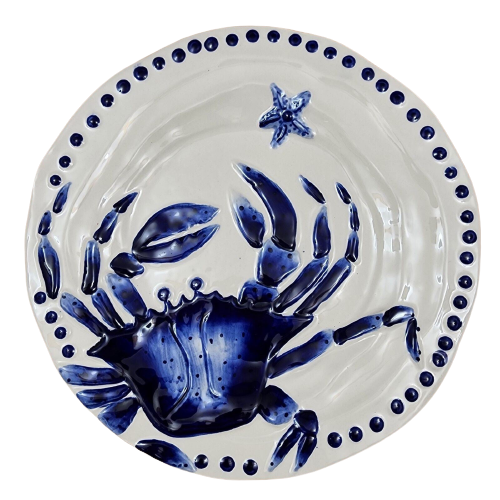
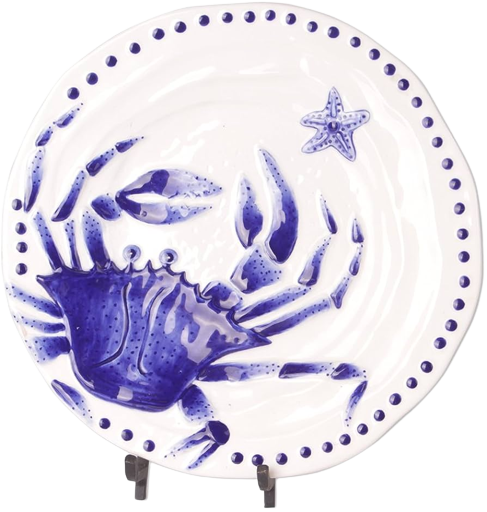

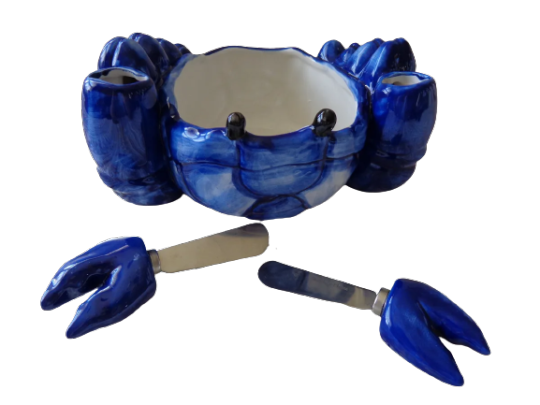
Blue Sky Clayworks Crab Dinnerware Set
#the crab butter dish!!! his fucking claws are little butter knives!!!!#crabs#dinnerware#plates#ocean aesthetic#funny#blue#mermaidkin#mermaid kin#sea witch#ocean witch
7K notes
·
View notes
Text
Shellback Crabs: these crabs create their own shields out of clamshells; their semi-membranous bodies can be pressed into the contours of the shell, producing a suction mechanism that holds the shell in place
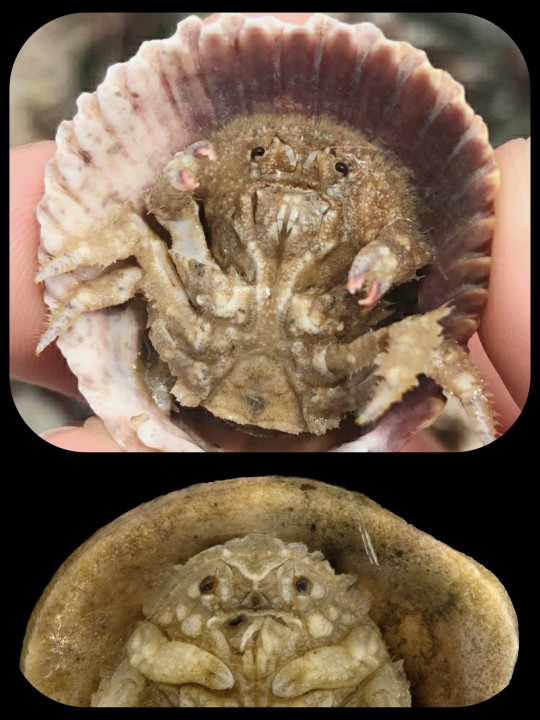
The members of this genus (Hypoconcha) have a series of unique adaptations that facilitate this kind of camouflage behavior. Many of the Dromiidae crabs (e.g. hermit crabs, sponge crabs, shellback crabs, etc.) are equipped with a specialized pair of legs that enables the crab to hold a shell, sea sponge, and/or ascidian against their body, but shellback crabs also have a flexible, semi-membranous body that can be tucked more firmly into the contours of a bivalve shell, producing a suction mechanism that keeps the shell firmly locked in place.
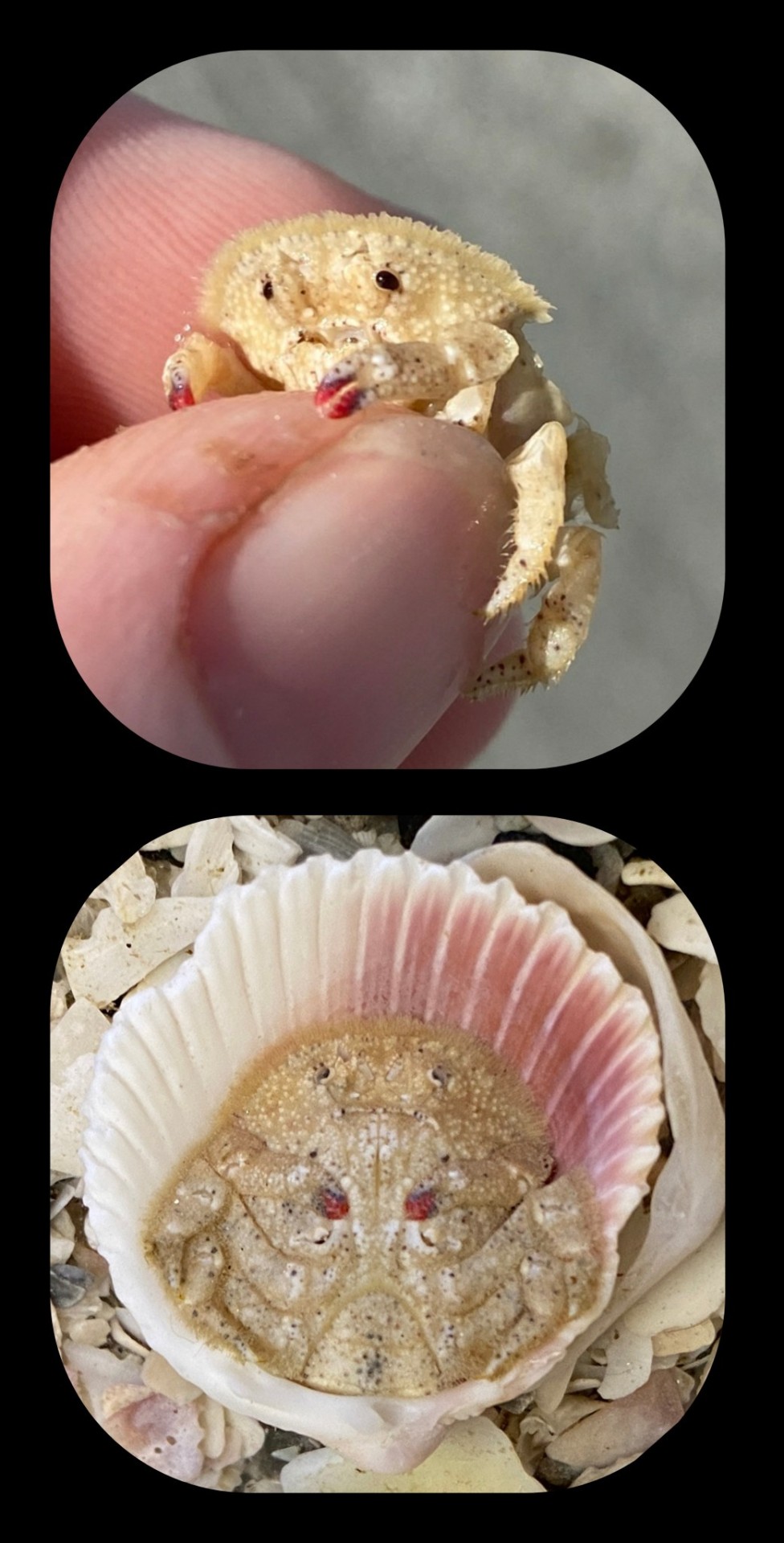
The body of the shellback crab is also covered in a very fine layer of hair-like structures called setae, and when the crab presses itself against the shell, these membranous "hairs" can take on an almost translucent appearance, particularly around the margins of the crab's body.
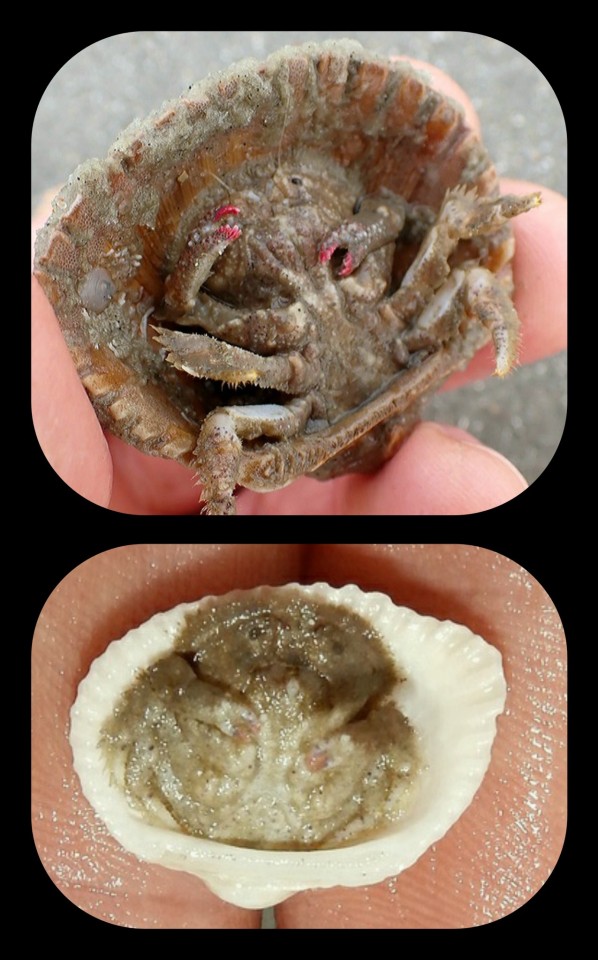
I recently posted some photos/info about some of the crabs in the genus Lamarckdromia (which belongs to the same family) and as I was doing the background research for that post, I was just kind of mesmerized by all of these weirdly adorable crabs that seem to exist within the Dromiidae family tree. Each genus has its own unique adaptations that allow the crabs to use specific materials for camouflage -- some of them use living sponges, clamshells, ascidians, etc.
And I could not stop laughing at the little faces on these crabs. They've all got the same bemused/indignant expression...as if some random asshole has just walked up to them, shoved them over, and announced to the entire ocean that there's a crab hiding beneath that disguise; as if that actually happens to them quite a lot, and they're getting really sick of it.

Sources & More Info:
Crustaceana Monographs: Comparison of the Shell-Carrying Behaviors of Desmodromia, Conchoecetes, and Hypoconcha (the relevant info is on page 191)
South Carolina Department of Natural Resources: Shellback Crabs and their Larval Stages (PDF)
South Carolina Public Radio: Shellback Crabs
Again, I don't normally feature crustaceans on my blog...but I really couldn't resist this one.
#arthropod#crustacean#marine biology#sea life#crab#shellback crab#hypoconcha#evolution#biology#cute animals#nature is weird#these guys look awfully crabby tho
12K notes
·
View notes
Text
"Many people know about the Yellowstone wolf miracle. After wolves were reintroduced to the national park in the mid-1990s, streamside bushes that had been grazed to stubble by out-of-control elk populations started bouncing back. Streambank erosion decreased. Creatures such as songbirds that favor greenery along creeks returned. Nearby aspens flourished.
While there is debate about how much of this stemmed from the wolves shrinking the elk population and how much was a subtle shift in elk behavior, the overall change was dramatic. People were captivated by the idea that a single charismatic predator’s return could ripple through an entire ecosystem. The result was trumpeted in publications such as National Geographic.
But have you heard about the sea otters and the salt marshes? Probably not.
It turns out these sleek coastal mammals, hunted nearly to extinction for their plush pelts, can play a wolf-like role in rapidly disappearing salt marshes, according to new research. The findings highlight the transformative power of a top predator, and the potential ecosystem benefits from their return.
“It begs the question: In how many other ecosystems worldwide could the reintroduction of a former top predator yield similar benefits?” said Brian Silliman, a Duke University ecologist involved in the research.
The work focused on Elk Slough, a tidal estuary at the edge of California’s Monterey Bay. The salt marsh lining the slough’s banks has been shrinking for decades. Between 1956 and 2003, the area lost 50% of its salt marshes.
Such tidal marshes are critical to keeping shorelines from eroding into the sea, and they are in decline around the world. The damage is often blamed on a combination of human’s altering coastal water flows, rising seas and nutrient pollution that weakens the roots of marsh plants.
But in Elk Slough, a return of sea otters hinted that their earlier disappearance might have been a factor as well. As many as 300,000 sea otters once swam in the coastal waters of western North America, from Baja California north to the Aleutian Islands. But a fur trade begun by Europeans in the 1700s nearly wiped out the animals, reducing their numbers to just a few thousand by the early 1900s. Southern sea otters, which lived on the California coast, were thought to be extinct until a handful were found in the early 1900s.
In the late 1900s, conservation organizations and government agencies embarked on an effort to revive the southern sea otters, which remain protected under the Endangered Species Act. In Monterey Bay, the Monterey Bay Aquarium selected Elk Slough as a prime place to release orphaned young sea otters taken in by the aquarium.
As the otter numbers grew, the dynamics within the salt marsh changed. Between 2008 and 2018, erosion of tidal creeks in the estuary fell by around 70% as otter numbers recovered from just 11 animals to nearly 120 following a population crash tied to an intense El Niño climate cycle.
While suggestive, those results are hardly bulletproof evidence of a link between otters and erosion. Nor does it explain how that might work.
To get a more detailed picture, the researchers visited 5 small tidal creeks feeding into the main slough. At each one, they enclosed some of the marsh with fencing to keep out otters, while other spots were left open. Over three years, they monitored the diverging fates of the different patches.
The results showed that otter presence made a dramatic difference in the condition of the marsh. They also helped illuminate why this was happening. It comes down to the otters’ appetite for small burrowing crabs that live in the marsh.
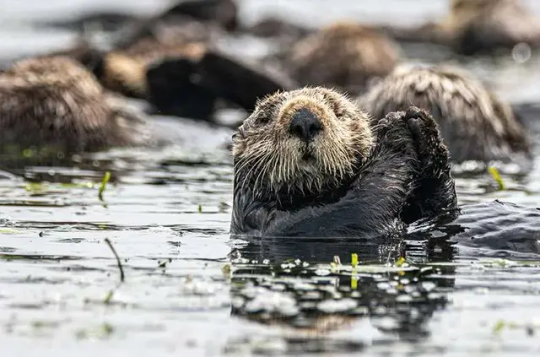
Adult otters need to eat around 25% of their body weight every day to endure the cold Pacific Ocean waters, the equivalent of 20 to 25 pounds. And crabs are one of their favorite meals. After three years, crab densities were 68% higher in fenced areas beyond the reach of otters. The number of crab burrows was also higher. At the same time, marsh grasses inside the fences fared worse, with 48% less mass of leaves and stems and 15% less root mass, a critical feature for capturing sediment that could otherwise wash away, the scientists reported in late January in Nature.
The results point to the crabs as a culprit in the decline of the marshes, as they excavate their holes and feed on the plant roots. It also shows the returning otters’ potential as a marsh savior, even in the face of rising sea levels and continued pollution. In tidal creeks with high numbers of otters, creek erosion was just 5 centimeters per year, 69% lower than in creeks with fewer otters and a far cry from earlier erosion of as much as 30 centimeters per year.
“The return of the sea otters didn’t reverse the losses, but it did slow them to a point that these systems could restabilize despite all the other pressures they are subject to,” said Brent Hughes, a biology professor at Sonoma State University and former postdoctoral researcher in Silliman’s Duke lab.
The findings raise the question of whether other coastal ecosystems might benefit from a return of top predators. The scientists note that a number of these places were once filled with such toothy creatures as bears, crocodiles, sharks, wolves, lions and dolphins. Sea otters are still largely absent along much of the West Coast.
As people wrestle to hold back the seas and revive their ailing coasts, a predator revival could offer relatively cheap and effective assistance. “It would cost millions of dollars for humans to rebuild these creek banks and restore these marshes,” Silliman said of Elk Slough. “The sea otters are stabilizing them for free in exchange for an all-you-can-eat crab feast.”"
-via Anthropocene Magazine, February 7, 2024
#otters#sea otters#conservation#erosion#coastal erosion#coastline#marshes#saltwater#marine science#marine biology#marine animals#sea creatures#ocean#sustainability#soil erosion#erosion control#crab#good news#hope
3K notes
·
View notes
Text
Going into 2024 like… 🦀 🖤 😞
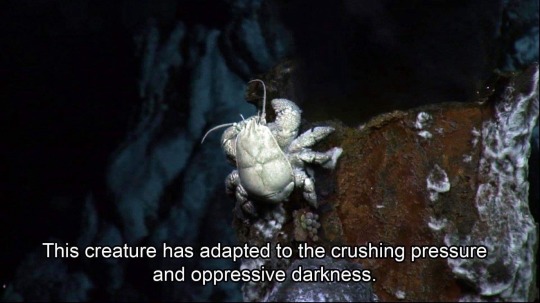
#crabs#feminism#you go girl#yeti crab#marine science#ocean#happy new year#love to sea it#marine memes#ocean meme#crab meme#marine biology#new years eve#sea creatures#crustacean#ocean life#oceanposting#marine life#ocean creatures#new years#sea animals#marine critters#aquatic life#sea life#sea critters#marine creatures#crab#deep sea
3K notes
·
View notes
Text
#poll#marine life#marine biology#deep ocean#deep sea#whalefall#fish#hagfish#crabs#shark#deep sea isopod
8K notes
·
View notes
Text




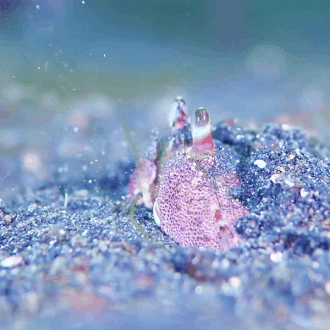

colorful box crab (cycloes granulosa) | source
#stim#crabs#sea creatures#marine life#sfw#blue#purple#pink#brown#underwater#crustaceans#animals#box crabs#sand#cycloes granulosa#ishy gifs#postish
2K notes
·
View notes
Text
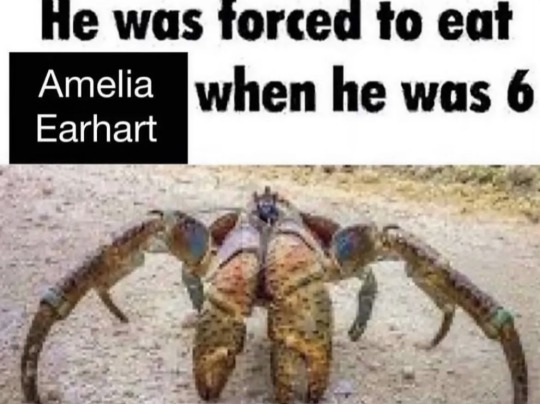
#coconut crab#amelia earhart#marine biology#ocean meme#fish meme#crab memes#aquarium#crabs#oceanposting#ocean#sea creatures#sea animals#marine life#fishblr
24K notes
·
View notes
Text
I wished for live action The Little Mermaid, they dropped the animal sidekicks and gave the roles to Ariel's sisters.
Cuz imagine Under The Sea is a plea by her sisters to stay with them and how much of an ensemble piece it could have been.
Or having them specifically be the reason why Triton destroys Ariel's grotto and why Ariel feels like not only her father but her entire family rejected her before becoming human.
Or that on land, her sisters feel remorse for what Ariel had lost so they're the ones who sing Kiss The Girl and repair their relationship with their sister.
Disney's devotion to just recreating a movie instead of exploring different elements in a new medium is why people are so sick of them.
#i just ariel's sisters to get personalities lmao#i rather we get a 6 person rendition of under the sea instead of a cgi crab thing
5K notes
·
View notes
Text

Gotta get back to my roots and start posting crab memes again
@starcoffinxd @official-crab-posts @waste-mixture
1K notes
·
View notes
Text



Yashima Gakutei, Crabs Near the Water's Edge, ca. 1830
Vincent van Gogh, A Crab on its Back, Paris, August-September, 1887
Vincent van Gogh, Two Crabs, 1889
#Yashima Gakutei#japanese prints#vincent van gogh#japanese artist#japanese art#asian art#dutch artist#dutch art#dutch painting#dutch painter#sea life#crabs crabs crabs#crustacean#wildlife#animals in art#art on tumblr#aesthetic#beauty#modern art#art history#tumblr art#tumblrpic#tumblrpictures#tumblraesthetic#aesthetictumblr
2K notes
·
View notes


